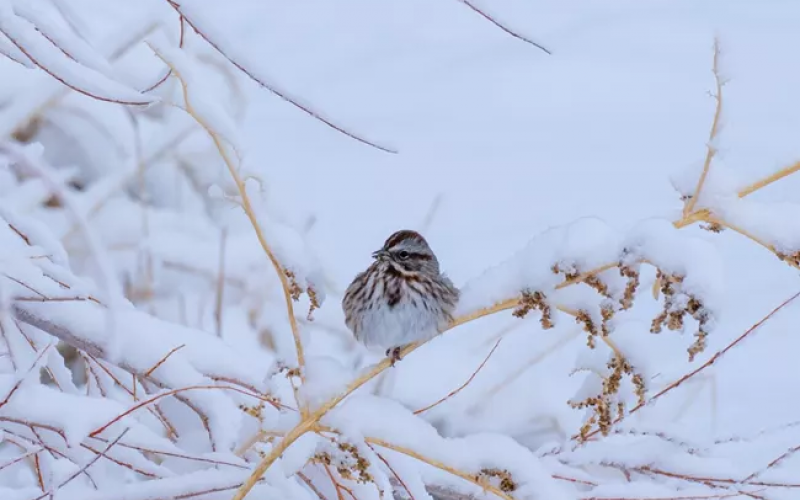The Midden: Bird Count

Photo: A song sparrow sits on a snowy branch in Great Basin National Park. Joey Danielson.
This article is the third in a series of posts showcasing articles published in the Summer 2022 issue of “The Midden”, Great Basin National Park’s semiannual resource management newsletter. The series will introduce you to some of the issues, projects, and management strategies currently happening in Great Basin National Park.
Ecologist Gretchen Baker reports the findings of a very successful bird count in December of 2021. With the help of 18 volunteers and interagency teamwork, spotters sighted 55 species and 2,538 birds on count day.
Results of the Christmas 2021 Bird Count
By Gretchen Baker, Ecologist
It was another year of dancing with ‘rona, but we managed to have an excellent turn out at the Snake Valley Christmas Bird Count on December 15, 2021 with 18 participants.
This year we had the added challenge of a huge snowstorm the day before, which closed roads and made for difficult travel. Nonetheless, all the Ely and St. George participants showed up and helped with the effort. We even had enough people to duplicate parts of routes, which always yields more birds.
The grand total was 55 species and 2538 birds seen on count day. Another 5 species were seen during count week. A couple standout bird species were 1) American Pipits—one team spotted 26 of them! They had only been counted on one count day and one count week previously and 2) a Snow Goose, previously a one-time count week bird, seen on a local pond north of the Great Basin Visitor Center, observed by another team.
Every route (except one) had at least one species that was not seen on any other route. The most counted birds were mallards (211), pinyon jays (184), dark eyed juncos (184), European starling (158), and common raven (97).
The Snake Valley Christmas Bird Count is an example of great volunteer involvement and interagency cooperation. Thanks to Utah Division of Natural Resources, Nevada Department of Wildlife, Ely Bureau of Land Management, Nevada Department of Conservation & Natural Resources, local volunteers, University of Nevada-Reno, and park staff for combining forces to get such good results.
